Assessment of Coating Properties in Car Body by Ultrasonic Method
Abstract
:1. Introduction
2. Materials and Methods
2.1. Ultrasonic Coating Width Testing Methodology
- -
- Pulse gain: 58 dB;
- -
- Ultrasonic wave speed: 4000 m/s;
- -
- Run-up: 0 µs;
- -
- Distance between heads: 110 mm;
- -
- Constant coupling between the head and the surface of the substrate.
2.2. Correlational Research Methodology
- -
- Preparation of the surface to which the car putty was applied (the same for all samples);
- -
- Preparation of the regeneration material—car putty (maintaining appropriate, i.e., identical proportions when mixing the components of the regeneration material for all samples);
- -
- Curing the coating in an oven (maintaining the appropriate time and temperature);
- -
- Performing the ultrasonic testing according to the specified procedure using the same test equipment and the same ultrasonic flaw detector settings for each sample;
- -
- Conducting strength tests with constant settings of the apparatus.
- -
- Temperature 40 °C—60 min;
- -
- Temperature of 50 °C—46 min;
- -
- Temperature 60 °C—47 min.
- |r|—reflection coefficient;
- z1—acoustic wave resistance of medium 1 kg/m2*s;
- z2—acoustic wave resistance of medium 2 kg/m2*s.
- |r|—reflection coefficient;
- ΔW—the decrease in the height of the pulses h1 and h2, expressed in decibels; h1—amplitude of the longitudinal wave after application of the coating; h2—amplitude of the longitudinal wave before application of the coating.
3. Results
3.1. Ultrasonic Coating Width Testing
3.2. Correlational Research
4. Discussion
5. Conclusions
Author Contributions
Funding
Institutional Review Board Statement
Informed Consent Statement
Data Availability Statement
Conflicts of Interest
References
- Mahajan, S.M.; Varade Mayur, A.; Mahajan Pratiksha, N.; Patil Sneha, V. Review on Automotive Body Coating Process. Int. J. Eng. Manag. Res. 2019, 9, 103–106. [Google Scholar]
- Trembach, B.; Silchenko, Y.; Balenko, O.; Hlachev, D.; Kulahin, K.; Heiko, H.; Bellorin-Herrera, O.; Khabosha, S.; Zakovorotnyi, O.; Trembach, I. Study of the hardfacing process using self-shielding flux-cored wire with an exothermic addition with a combined oxidizer of the Al-(CuO/Fe2O3) system. Int. J. Adv. Manuf. Technol. 2024, 134, 309–335. [Google Scholar] [CrossRef]
- Lozynskyi, V.; Trembach, B.; Hossain, M.M.; Kabir, M.H.; Silchenko, Y.; Krbata, M.; Sadovyi, K.; Kolomiitse, O.; Ropyak, L. Prediction of phase composition and mechanical properties of Fe–Cr–C–B–Ti–Cu hardfacing alloys: Modeling and experimental Validations. Heliyon 2024, 10, e25199. [Google Scholar] [CrossRef]
- Akafuah, N.K.; Poozesh, S.; Salaimeh, A.; Patrick, G.; Lawler, K.; Saito, K. Evolution of the Automotive Body Coating Process—A Review. Coatings 2016, 6, 24. [Google Scholar] [CrossRef]
- Bagani, C.; Halfpenny, A.; Hill, M.; Tarasek, A. A practical methodology for the fatigue life estimation of adhesive joints. Procedia Struct. Integr. 2024, 57, 598–610. [Google Scholar] [CrossRef]
- Adams, R.D. Adhesive Bonding: Science, Technology and Applications; Woodhead Publishing: Sawston, UK; Elsevier: Amsterdam, The Netherlands, 2021; ISBN 978-0-12-819954-1. [Google Scholar]
- Chapman, G.B., II. Nondestructive Evaluation of Adhesive Bonds Using 20 MHz and 25 Khz Ultrasonic Frequencies on Metal and Polymer Assemblies; AuthorHouse Publishing: Bloomington, IN, USA, 2014; ISBN 978-1-4969-2553-4. [Google Scholar]
- Liu, B.; Wang, S.; Zhan, M.; Wang, H.; Zhang, G.; Jian, Q. Optical nondestructive evaluation for minor debonding defects and interfacial adhesive strength of solid propellant. Measurement 2022, 194, 111066. [Google Scholar] [CrossRef]
- Opdam, N.J.M.; Roeters, F.J.M.; Verdonschot, E.H. Adaptation and radiographic evaluation of four adhesive systems. J. Dent. 1997, 25, 391–397. [Google Scholar] [CrossRef]
- Hung, Y.Y.; Ng, N.; Ng, R.; Shepard, S.M.; Hou, Y.; Lhota, J.R. Review and comparison of shearography and pulsed thermography for adhesive bond evaluation. Opt. Eng. 2007, 46, 5. [Google Scholar] [CrossRef]
- Kowalczyk, J.; Jósko, M.; Wieczorek, D.; Sędłak, K.; Nowak, M. Study of the Kinetics of Adhesive Bond Formation Using the Ultrasonic Method. Appl. Sci. 2024, 14, 163. [Google Scholar] [CrossRef]
- Kowalczyk, J.; Matysiak, W.; Sawczuk, W.; Wieczorek, D.; Sędłak, K.; Nowak, M. Quality Tests of Hybrid Joint–Clinching and Adhesive—Case Study. Appl. Sci. 2022, 12, 11782. [Google Scholar] [CrossRef]
- Jeenjitkaew, C.; Guild, F.J. The analysis of kissing bonds in adhesive joints. Int. J. Adhes. Adhes. 2017, 75, 101–107. [Google Scholar] [CrossRef]
- Solodov, I.; Kornely, M.; Philipp, J.; Stammen, E.; Dilger, K.; Kreutzbruck, M. Linear vs nonlinear ultrasonic testing of kissing bonds in adhesive joints. Ultrasonics 2023, 132, 106967. [Google Scholar] [CrossRef] [PubMed]
- Goglio, L.; Rossetto, M. Ultrasonic testing of adhesive bonds of thin metal sheets. NDT E Int. 1999, 32, 323–331. [Google Scholar] [CrossRef]
- Ulbrich, D. Monitoring the boundary of an adhesive coating to a steel substrate with an ultrasonic Rayleigh wave. Open Eng. 2022, 12, 933–945. [Google Scholar] [CrossRef]
- Kowalczyk, J.; Ulbrich, D.; Sędłak, K.; Nowak, M. Adhesive Joints of Additively Manufactured Adherends: Ultrasonic Evaluation of Adhesion Strength. Materials 2022, 15, 3290. [Google Scholar] [CrossRef]
- Deng, M.; Wang, P.; Lv, X. Nondestructive evaluation of adhesive joints in layered structures using nonlinear measurements of second harmonics of ultrasonic Lamb waves. In Proceedings of the IEEE Ultrasonics Symposium 2004, Montreal, QC, Canada, 23–27 August 2004. [Google Scholar]
- Jósko, M. Metodologiczne Aspekty Oceny Przyczepności Powłok Regeneracyjnych Metodą Ultradźwiękową; Poznan University of Technology Publishing House: Poznań, Poland, 2002. [Google Scholar]
- Zhang, J.; Cho, Y.; Kim, J.; Malikov, A.K.u.; Kim, Y.H.; Yi, J.-H.; Li, W. Non-Destructive Evaluation of Coating Thickness Using Water Immersion Ultrasonic Testing. Coatings 2021, 11, 1421. [Google Scholar] [CrossRef]
- Chen, H.-L.R.; Zhang, B.; Alvin, M.A.; Lin, Y. Ultrasonic Detection of Delamination and Material Characterization of Thermal Barrier Coatings. J. Therm. Spray Technol. 2012, 21, 1184–1194. [Google Scholar] [CrossRef]
- Alig, I.; Tadjbach, S.; Kruger, P.; Oehler, H.; Lellinger, D. Characterization of coating systems by scanning acoustic microscopy: Debonding, blistering and surface topology. Prog. Org. Coat. 2009, 64, 112–119. [Google Scholar] [CrossRef]
- Kamran, M.S.; Rehman, A.; Adnan, M.; Ali, H.; Noor, F. Diagnostics of reciprocating machines using vibration analysis and ultrasound techniques. Insight Non-Destr. Test. Cond. Monit. 2019, 61, 676–682. [Google Scholar] [CrossRef]
- Ditri, J.J.; Hongerholt, D. Stress distribution determination in isotropic materials via inversion of ultrasonic Rayleigh wave dispersion data. Int. J. Solids Struct. 1996, 33, 2437–2451. [Google Scholar] [CrossRef]
- Allin, J.M. Disbond Detection in Adhesive Joints Using Low-Frequency Ultrasound. Ph.D. Thesis, University of London, London, UK, 2002. [Google Scholar]
- Pilarski, A.; Rose, J.L. A transverse-wave ultrasonic oblique-incidence technique for interfacial weakness detection in adhesive bonds. J. Appl. Phys. 1988, 63, 300–307. [Google Scholar] [CrossRef]
- Feng, B.; Ribeiro, A.L.; Pasadas, D.J.; Ramos, H.G. Locating Low Velocity Impacts on a Composite Plate Using Multi-Frequency Image Fusion and Artificial Neural Network. J. Nondestruct. Eval. 2022, 41, 34. [Google Scholar] [CrossRef]
- Yusa, N.; Knopp, J.S. Evaluation of Probability of Detection (POD) Studies with Multiple Explanatory Variables. J. Nucl. Sci. Technol. 2015, 53, 574–579. [Google Scholar] [CrossRef]
- Sun, H.; Ramuhalli, P.; Jacob, R.E. Machine Learning for Ultrasonic Nondestructive Examination of Welding Defects: A Systematic Review. Ultrasonics 2023, 127, 106854. [Google Scholar] [CrossRef] [PubMed]
- Inês Silva, M.; Malitckii, E.; Santos, T.G.; Vilaça, P. Review of Conventional and Advanced Non-Destructive Testing Techniques for Detection and Characterization of Small-Scale Defects. Prog. Mater. Sci. 2023, 138, 101155. [Google Scholar] [CrossRef]
- Maciusowicz, M.; Psuj, G. Classification of Grain-Oriented Electrical Steel Sheets by Magnetic Barkhausen Noise Using Time-Frequency Analysis and Selected Machine Learning Algorithms. Appl. Sci. 2022, 12, 12469. [Google Scholar] [CrossRef]
- Guyon, I.; Elisseeff, A. An introduction to variable and feature selection. J. Mach. Learn. Res. 2003, 3, 1157–1182. [Google Scholar]
- Johnson, R.A.; Wichern, D.W. Applied Multivariate Statistical Analysis, 4th ed.; Repr. with Corr.; Prentice Hall: Upper Saddle River, NJ, USA, 1999; ISBN 978-0-13-834194-7. [Google Scholar]
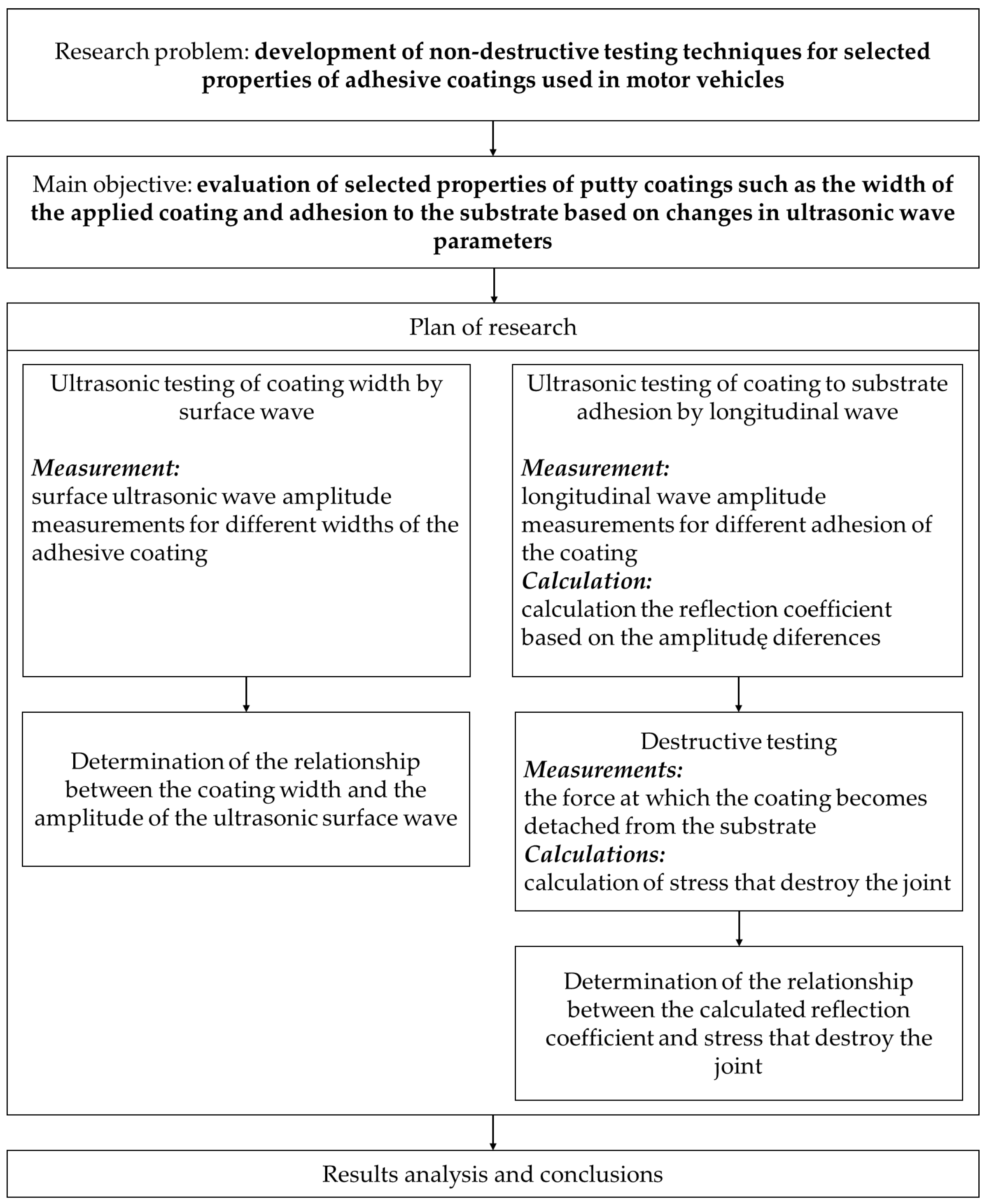

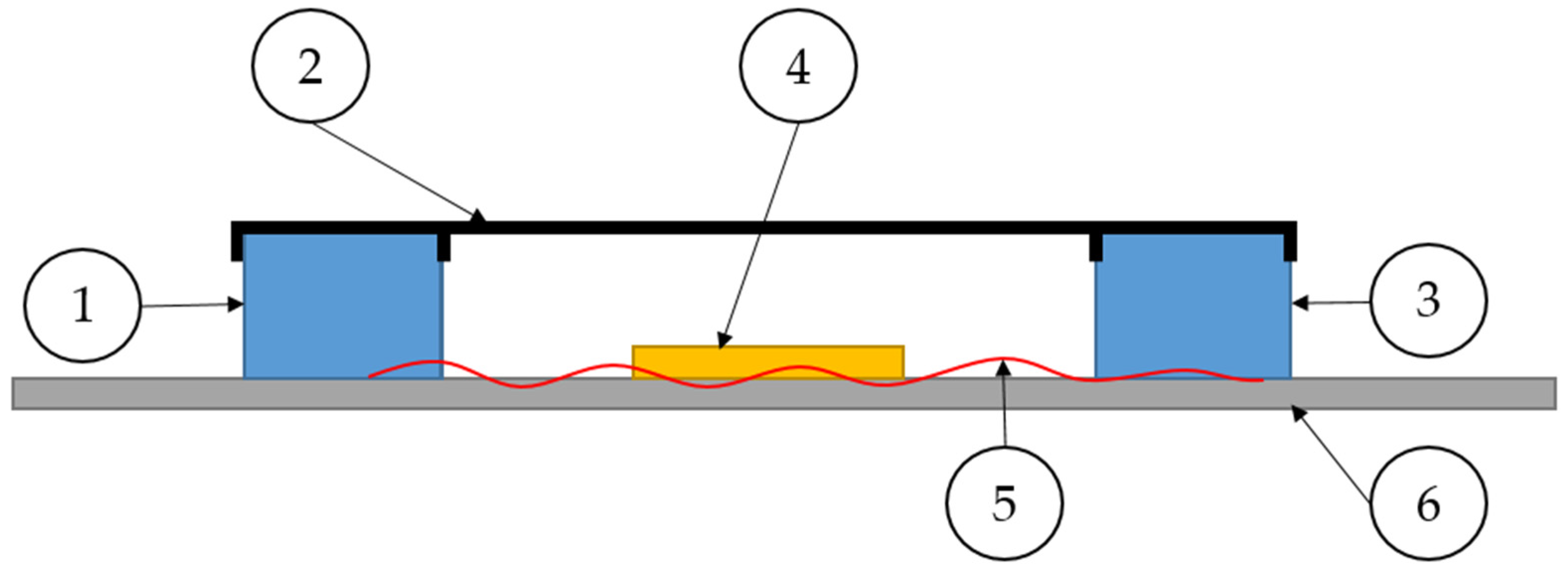


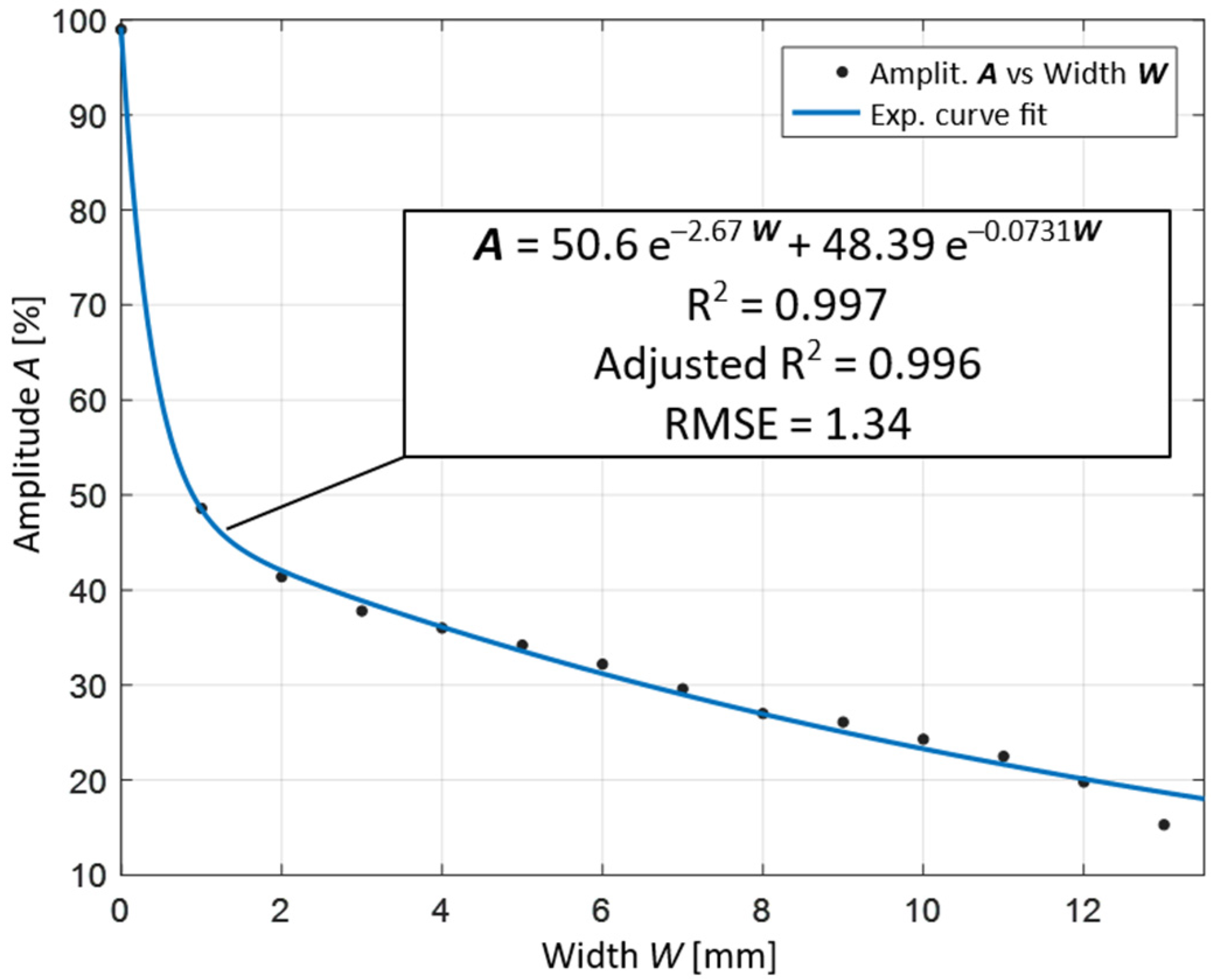


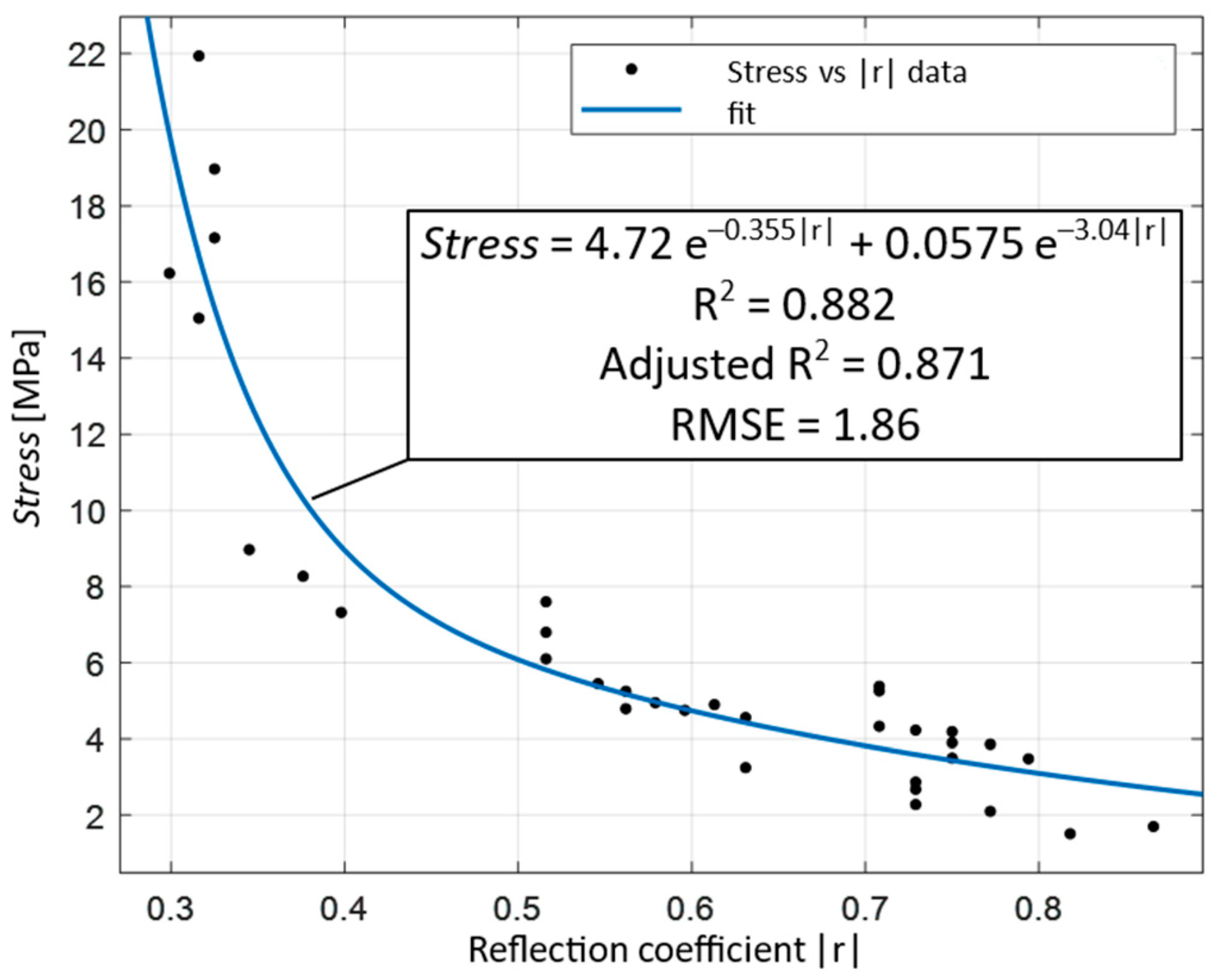
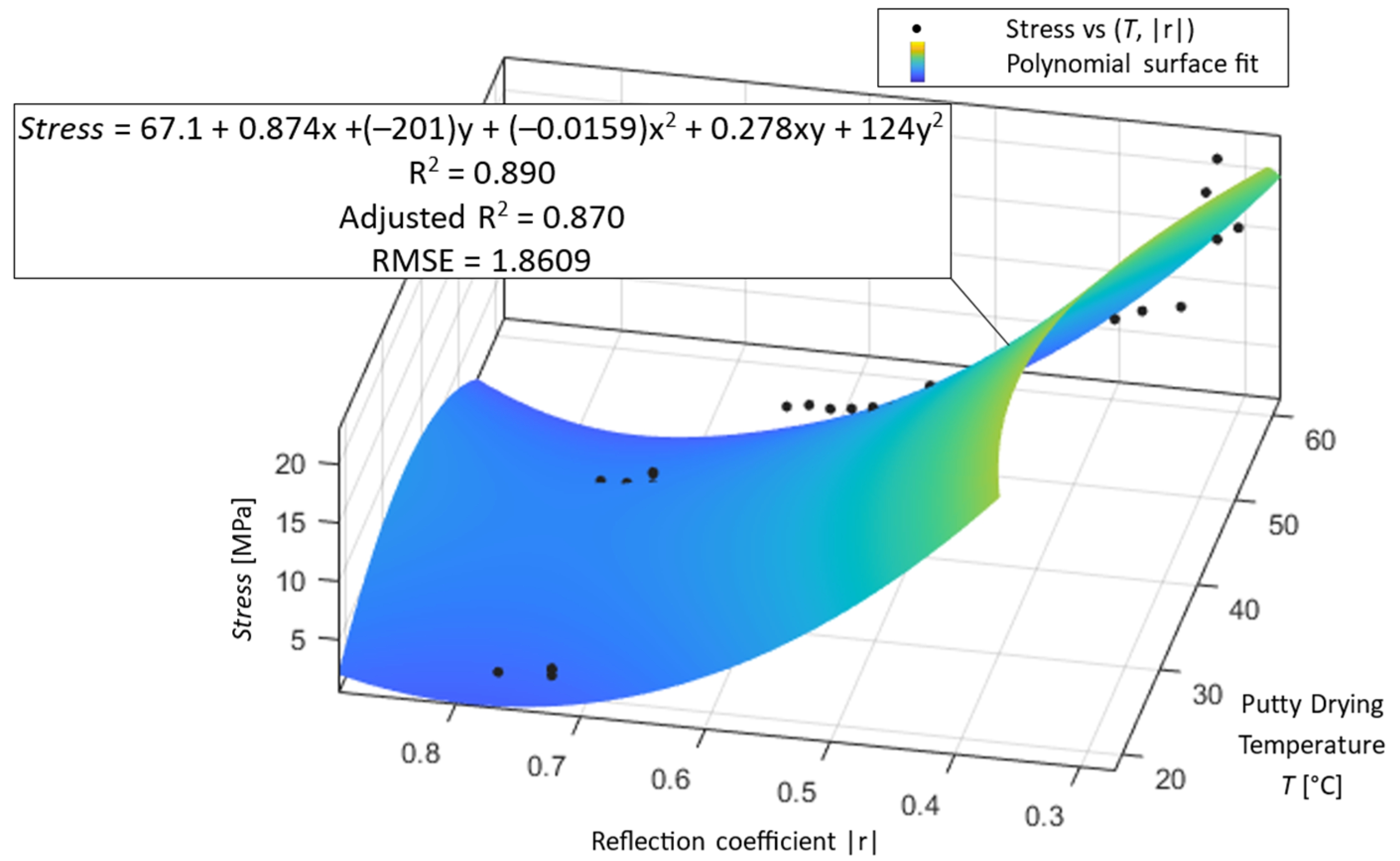
| Width [mm] | No Coating | 1 | 2 | 3 | 4 | 5 | 6 | 7 | 8 | 9 | 10 | 11 | 12 | 13 |
|---|---|---|---|---|---|---|---|---|---|---|---|---|---|---|
| Amplitude [%]—average value | 99 | 48.6 | 41.4 | 37.8 | 36 | 34.2 | 32.2 | 29.6 | 27 | 26.1 | 24.3 | 22.5 | 19.8 | 15.3 |
| Sample | Ra | Rz | Reflection Coefficient | Force [N] | Stress [MPa] |
|---|---|---|---|---|---|
| 20.1 | 0.659 | 4.220 | 0.729 | 459 | 2.28 |
| 20.2 | 0.837 | 5.910 | 0.631 | 653 | 3.25 |
| 20.3 | 0.499 | 2.855 | 0.772 | 422 | 2.10 |
| 20.4 | 0.429 | 3.315 | 0.866 | 342 | 1.70 |
| 20.5 | 0.588 | 4.055 | 0.668 | 283 | 1.41 |
| 20.6 | 0.531 | 3.955 | 0.729 | 577 | 2.87 |
| 20.7 | 0.369 | 2.860 | 0.516 | 399 | 1.99 |
| 20.8 | 0.626 | 4.145 | 0.729 | 539 | 2.68 |
| 20.9 | 0.909 | 6.525 | 0.631 | 78 | 0.39 |
| 20.10 | 0.419 | 3.600 | 0.818 | 303 | 1.51 |
| Average | 0.586 | 4.144 | 0.709 | 405.5 | 2.018 |
| Sample | Ra | Rz | Reflection Coefficient | Force [N] | Stress [MPa] |
|---|---|---|---|---|---|
| 40.1 | 0.552 | 4.170 | 0.794 | 699 | 3.48 |
| 40.2 | 0.750 | 4.815 | 0.750 | 842 | 4.19 |
| 40.3 | 0.731 | 5.595 | 0.750 | 783 | 3.90 |
| 40.4 | 0.412 | 3.600 | 0.708 | 870 | 4.33 |
| 40.5 | 0.469 | 3.360 | 0.772 | 776 | 3.86 |
| 40.6 | 0.649 | 5.395 | 0.750 | 703 | 3.50 |
| 40.7 | 1.820 | 10.820 | 0.708 | 1081 | 5.38 |
| 40.8 | 0.659 | 4.905 | 0.708 | 1057 | 5.26 |
| 40.9 | 1.440 | 8.355 | 0.729 | 851 | 4.23 |
| 40.10 | 0.981 | 6.280 | 0.266 | 666 | 3.31 |
| Average | 0.846 | 5.730 | 0.693 | 832.8 | 4.144 |
| Sample | Ra | Rz | Reflection Coefficient | Force [N] | Stress [MPa] |
|---|---|---|---|---|---|
| 50.1 | 0.832 | 5.600 | 0.516 | 1527 | 7.60 |
| 50.2 | 1.735 | 8.890 | 0.562 | 1056 | 5.25 |
| 50.3 | 0.398 | 3.470 | 0.631 | 917 | 4.56 |
| 50.4 | 0.819 | 6.955 | 0.579 | 995 | 4.95 |
| 50.5 | 0.523 | 3.535 | 0.596 | 955 | 4.75 |
| 50.6 | 0.656 | 3.930 | 0.516 | 1225 | 6.10 |
| 50.7 | 1.037 | 6.295 | 0.546 | 1096 | 5.45 |
| 50.8 | 0.792 | 6.265 | 0.516 | 1366 | 6.80 |
| 50.9 | 0.878 | 6.505 | 0.562 | 962 | 4.79 |
| 50.10 | 0.756 | 6.025 | 0.613 | 985 | 4.90 |
| Average | 0.842 | 5.747 | 0.564 | 1108.4 | 5.516 |
| Sample | Ra | Rz | Reflection Coefficient | Force [N] | Stress [MPa] |
|---|---|---|---|---|---|
| 60.1 | 0.673 | 4.760 | 0.398 | 1472 | 7.32 |
| 60.2 | 1.210 | 6.790 | 0.299 | 3262 | 16.23 |
| 60.3 | 1.130 | 6.535 | 0.316 | 3025 | 15.05 |
| 60.4 | 0.693 | 5.575 | 0.345 | 1802 | 8.97 |
| 60.5 | 0.689 | 5.255 | 0.398 | 1241 | 6.18 |
| 60.6 | 0.749 | 6.185 | 0.307 | 3509 | 17.46 |
| 60.7 | 0.979 | 6.235 | 0.376 | 1662 | 8.27 |
| 60.8 | 1.043 | 6.860 | 0.325 | 3812 | 18.97 |
| 60.9 | 0.771 | 5.305 | 0.325 | 3449 | 17.16 |
| 60.10 | 0.872 | 6.735 | 0.316 | 4410 | 21.94 |
| Average | 0.846 | 5.730 | 0.341 | 2764.4 | 13.756 |
Disclaimer/Publisher’s Note: The statements, opinions and data contained in all publications are solely those of the individual author(s) and contributor(s) and not of MDPI and/or the editor(s). MDPI and/or the editor(s) disclaim responsibility for any injury to people or property resulting from any ideas, methods, instructions or products referred to in the content. |
© 2024 by the authors. Licensee MDPI, Basel, Switzerland. This article is an open access article distributed under the terms and conditions of the Creative Commons Attribution (CC BY) license (https://creativecommons.org/licenses/by/4.0/).
Share and Cite
Ulbrich, D.; Psuj, G.; Bartkowski, D.; Bartkowska, A. Assessment of Coating Properties in Car Body by Ultrasonic Method. Appl. Sci. 2024, 14, 8117. https://doi.org/10.3390/app14188117
Ulbrich D, Psuj G, Bartkowski D, Bartkowska A. Assessment of Coating Properties in Car Body by Ultrasonic Method. Applied Sciences. 2024; 14(18):8117. https://doi.org/10.3390/app14188117
Chicago/Turabian StyleUlbrich, Dariusz, Grzegorz Psuj, Dariusz Bartkowski, and Aneta Bartkowska. 2024. "Assessment of Coating Properties in Car Body by Ultrasonic Method" Applied Sciences 14, no. 18: 8117. https://doi.org/10.3390/app14188117









